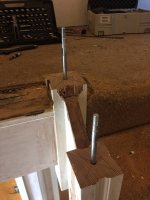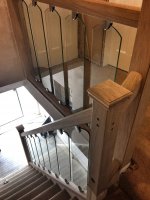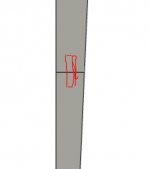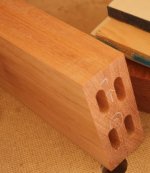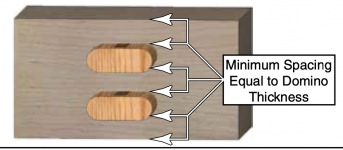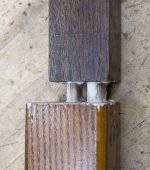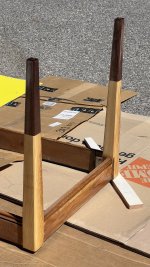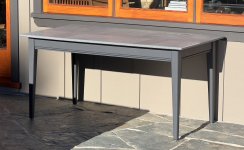smorgasbord
Member
I've got a Q&D project (Quick & Dirty) to do this weekend - extend the legs on an outdoor coffee table that has a granite top.
Normally, I'd rebuild a whole new leg set, but to get this done more quickly, and since it's going to get painted anyway, I decided to extend the legs by 275mm (just under 11").
The existing legs are 60mm square with 5mm chamfered corners, so pretty hefty. I have some 46mm square stock salvaged from an old table to use. My idea is to line up the two outside edges, then taper the inside at an angle such that there won't be a step at the joint.
Here's a rough Fusion360 view:
[attachimg=1]
I've got the big Domino XL, and so my question is? What size dominoes should I use for max strength? Since this is end grain to end grain, the domino will provide almost all of the strength. I've done similar joints before, inlaying wood across both pieces on two sides, but now with the Domino I'm thinking I can do something quick and easy and yet strong enough.
The 12mm or 14mm thick ones that are really long? Or better to double up some thinner and shorter ones? I'm leaning towards just the single 14mm ones at full length.
Thoughts?
Normally, I'd rebuild a whole new leg set, but to get this done more quickly, and since it's going to get painted anyway, I decided to extend the legs by 275mm (just under 11").
The existing legs are 60mm square with 5mm chamfered corners, so pretty hefty. I have some 46mm square stock salvaged from an old table to use. My idea is to line up the two outside edges, then taper the inside at an angle such that there won't be a step at the joint.
Here's a rough Fusion360 view:
[attachimg=1]
I've got the big Domino XL, and so my question is? What size dominoes should I use for max strength? Since this is end grain to end grain, the domino will provide almost all of the strength. I've done similar joints before, inlaying wood across both pieces on two sides, but now with the Domino I'm thinking I can do something quick and easy and yet strong enough.
The 12mm or 14mm thick ones that are really long? Or better to double up some thinner and shorter ones? I'm leaning towards just the single 14mm ones at full length.
Thoughts?


